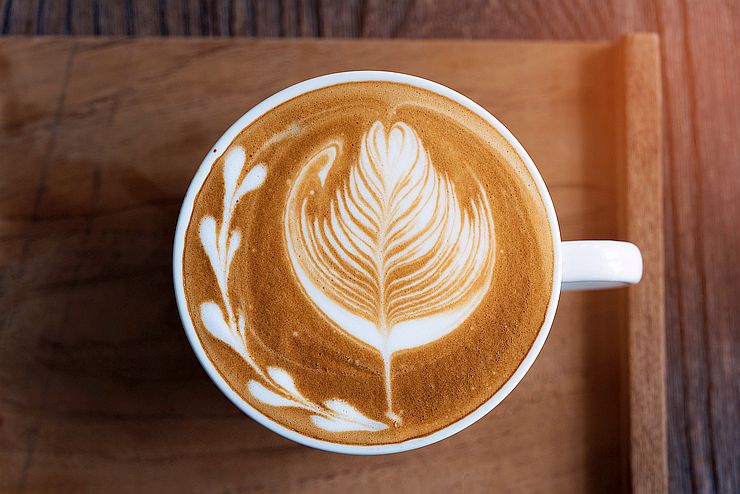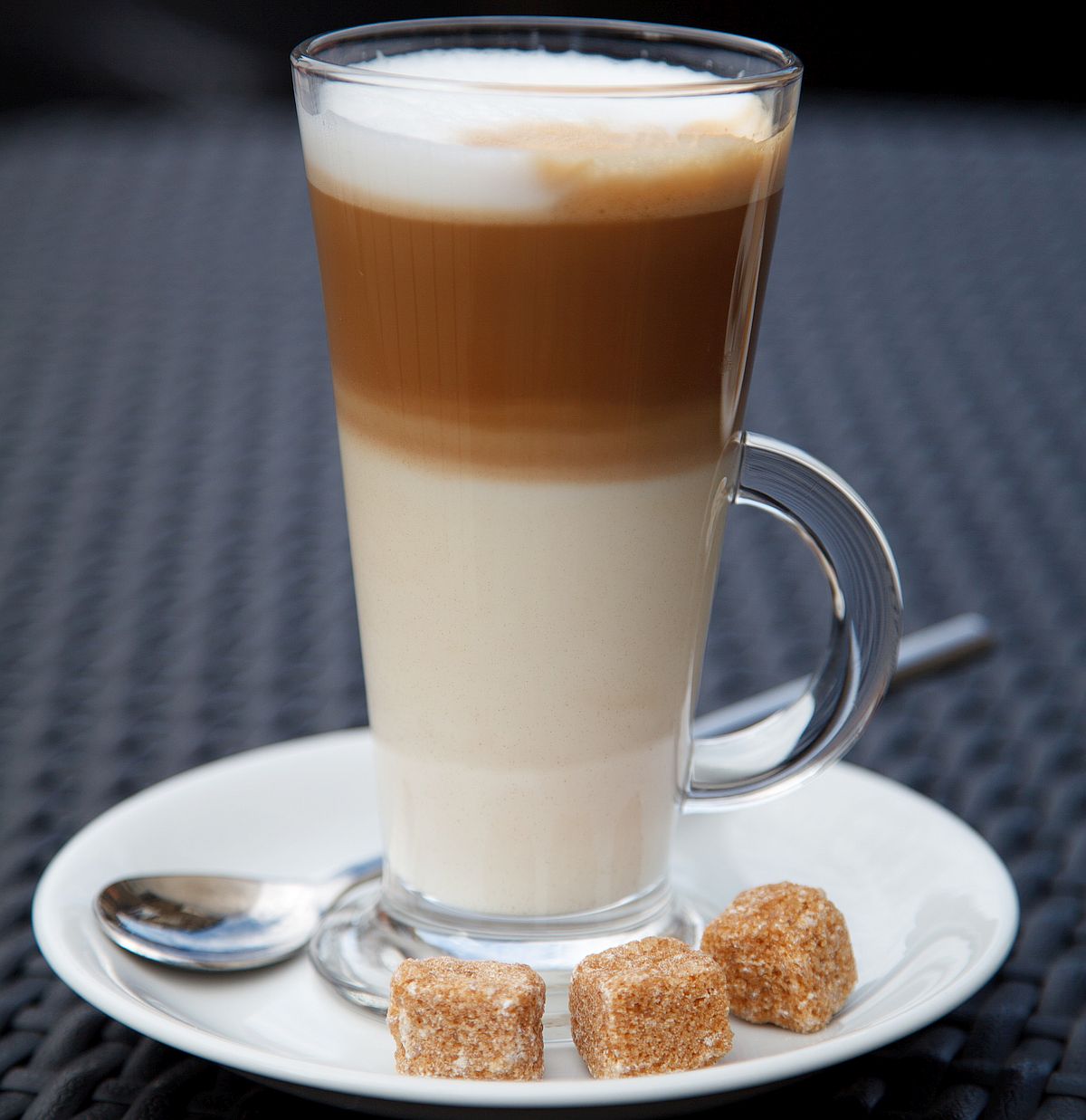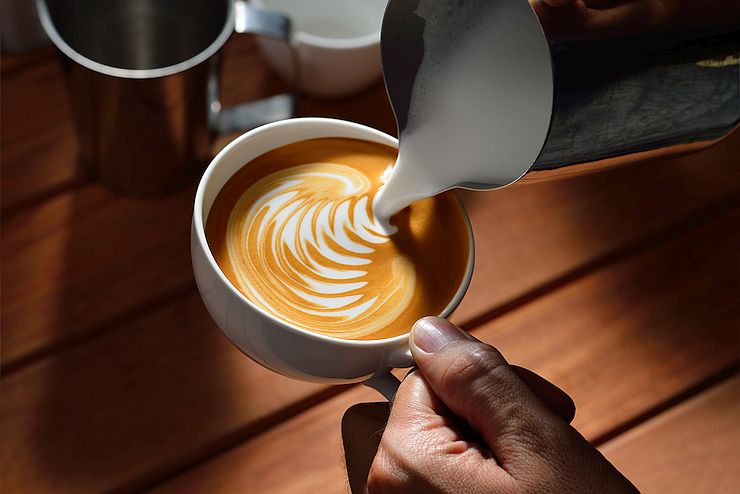A latte is an espresso drink that you can get at any coffee shop. It consists of espresso, steamed milk and foam, and some flavorings. The word “latte” comes from the Italian word for milk: latte. Which makes sense because it contains both espresso and steamed milk! In order to make a latte correctly, you must have an espresso machine with a steam wand so that you can froth the milk yourself.
If you don’t own an espresso machine, then there are other options such as using a French press or AeroPress. There are many different types of lattes including iced lattes which most people associate with summertime beverages but they’re also great during cold winter days too.

What ingredients are in a latte?
Latte is made up of espresso, steamed milk, and foam. The milk is steamed until it’s hot and bubbly. The foam is created by adding air to the hot milk using a steam wand. A latte has more foam than a cappuccino.
What Is The Best Coffee for Latte
The coffee used for lattes is espresso . Espresso is a coffee that is brewed by forcing hot water through ground coffee beans. Espresso has a unique taste that doesn’t resemble any other coffees.
In a coffee shop lattes are made with real espresso, (check this to see what is espresso). Espresso is the best coffee for preparing latte, as mentioned, however, if you are on a low budget and cannot afford an espresso machine, you can use espresso alternatives. For the best flavor, we recommend using a pump driven espresso machine. Here is our espresso brewing guide.
What is the best milk to use for steaming?
The best milk to use for steaming is whole milk. Whole milk has a high fat content, which makes it great for creating foam. Low-fat and skimmed milks don’t produce as much foam as whole milk, though it can be used for lattes.
Commercial milk frothers can texturize very well low fat milks and vegetable milks. This is why milk alternatives such as oat milk, almond milk, etc, are very popular in coffee shops.
How to Make a Latte

There are many ways to make a latte. The most common way is by using an espresso machine. If you don’t have an espresso machine, you can use a stovetop espresso maker or even instant espresso. Some baristas will not even consider instant espresso as an alternative. The flavor of instant coffee, and the quality of the beverage is below par.
The stovetop latte is a very popular drink in Italy, and it is an inexpensive alternative. AeroPress is another espresso alternative, which matches the strength and the flavor profile of traditional pump espresso machine. The important thing when choosing a type of coffee as the base for your latte, is to choose a brewing method that makes a strong coffee. Drip coffee, for instance, is too light for latte, or cappuccino. Drip coffee doesn’t have enough body to make your latte tasty.
If desired, add any extra ingredients such as sugar, syrup, or vanilla extract.
The ratio of coffee to milk in a latte is about 1 to 3 up to 1 to 5. This translates into a drink that contains 2 ounces of espresso and 10 ounces of steamed milk.
Steaming milk for a latte is more difficult than steaming milk to make cappuccino. Milk foam should be firm and dense for a good latte, and it can have soft peaks. However, the barista needs to avoid to create stiff and dry foamed milk. The stiffer texture with larger bubbles is found in cappuccinos but not in latte.

Latte, (Caffe Latte)
Equipment
- 1 espresso machine
- 1 burr coffee grinder
- 1 tamper
- 1 kitchen scale
- 1 espresso leveler/distribution tool optional
Ingredients
- 14 grams medium-dark roast coffee beans up to 18 grams depending on the filter basket
- 6 fluid ounces cold milk whole, or 2% are the best, but nonfat works too
Instructions
Pull 2 Espresso Shots
- Turn on the espresso machine to heat it up
- Finely grind 14-18 grams of coffee beans to an espresso grind size. You need to use a double basket for this recipe.
- Dump the coffee grounds in the filter-basket.
- Use an espresso leveler, or slightly knock the portafilter on the counter to pack the coffee grounds.
- Tamp the coffee grounds with a considerable force. After tamping, there should be about 3-4 mm from the basket's edge to the coffee puck.
- Lock the portafilter in the espresso machine.
- Place the latte cup on the espresso machine tray and and switch the brew button ON.
- Pull your double espresso shot for about 20 to 25 seconds.
- You should get about 2 fluid ounces of espresso. If you need instructions, here is our espresso brewing guide, for a step by step tutorial. After the shot is ready, put it aside, and start the milk steaming.
Steam the Milk
- Switch your espresso machine to milk steaming and let the boiler warm up and reach the needed temperature.
- Pour 6 fl. oz. of cold milk into a stainless steel pitcher. When the milk is cold you have more time to steam and microfoam without scalding the milk.
- When the machine is ready, submerge the steaming wand just below the milk surface and start steaming.
- Tilt the pitcher at an angle, so that the milk swirls, moving around in the frothing jug.
- As we steam, we introduce air bubbles into the milk and the milk will have more volume. Lower the steaming wand little by little in the pitcher until you reach the bottom. You want to advance fairly quickly so that you do not create stiff foam.
- Continue to steam until the side of the pitcher becomes hot – around 155°F.
- Turn off the steam while still holding the tip of the wand under the milk surface.
Combine The Drinks into a Latte
- There should be almost no milk foam in the pitcher. Pour the steamed milk over the espresso, creating a design with the foamier part of the milk.
- Serve hot.
Video
Notes
Latte Art
The microfoam in lattes makes it possible to create latte art. The barista can pour the milk into the cup in a way that will create beautiful designs on top of the latte.
It is critical that the milk has the proper texture when creating latte art. If the milk is too stiff, it will not have the needed precision and it will pour too thick. If the milk is too liquid, it will mix with the coffee without creating any design.
The latte art cups are wider, almost like a soup bowl. This is because the barista needs a larger surface for creating their design. It’s almost like a virtual canvas. The recipients for latte macchiato are tall and narrow, and most of the times are made of glass to show the beverage layers.
Latte vs Cappuccino vs Flat White
Although latte and cappuccino are very similar, and they contain the same ingredients, they look and taste quite differently. So, what is the difference between flat white, latte and cappuccino? The article above goes in more details, discussing both technical and flavor related aspects. But as a very compressed version of that article, here are those differences.
Cappuccinos are more dense and have a lot more foam than lattes. The foam on top of a cappuccino is usually about an inch thick, while the foam on a latte is only about .25 inches thick, or it’s completely missing.
The ratio of coffee to milk for cappuccino and latte are the following:
- latte: 1/3 espresso, 2/3 steamed milk
In North-America, the typical recipe of a latte calls for two shots of espresso and 6 ounces of steamed milk. - cappuccino: 1/3 espresso, 1/3 steamed milk, 1/3 foamed milk.
The traditional cappuccino is a mix of roughly 50% milk and 50% coffee, since the foamed milk almost doesn’t count. - flat white: 1/3 espresso, 2/3 frothed milk
What sets it apart from cappuccino is that the milk for flat white is micro-foamed and it doesn’t have the dry foam top.
If poured in glass cups, lattes look lighter in color than cappuccinos because the coffee to milk ratio is higher. Even flat whites look lighter in color, compared to a cappuccino.
Latte Variants

There are many latte variants, such as latte macchiato, or iced latte.
Latte macchiato is made with the same proportions of steamed milk and espresso, but then it’s topped with some milk foam. The frothed milk serves as thermic insulation for the drink, and it’s also an easier way to decorate the beverage. The only difference between a latte macchiato and a latte is the layer of milk foam at the top. The foam layer also means you cannot make latte art.
Iced lattes are just latte that are served cold. The coffee can be poured over ice, or the espresso can be mixed with milk and then frozen into cubes for later use.
The main variants can be further changed by adding various flavored syrups, or using various nut milks.
